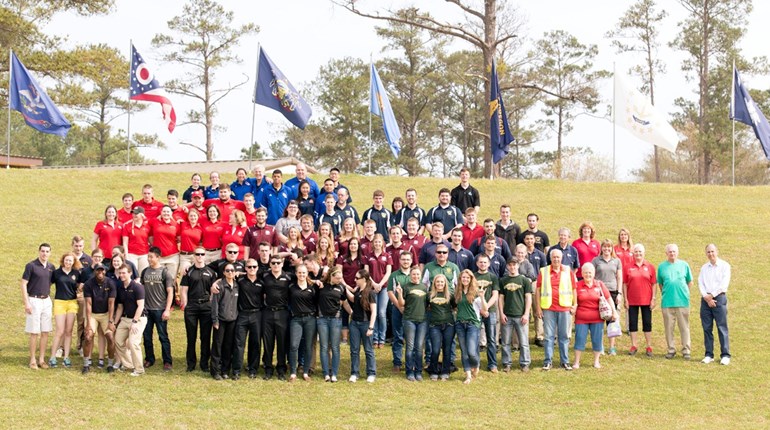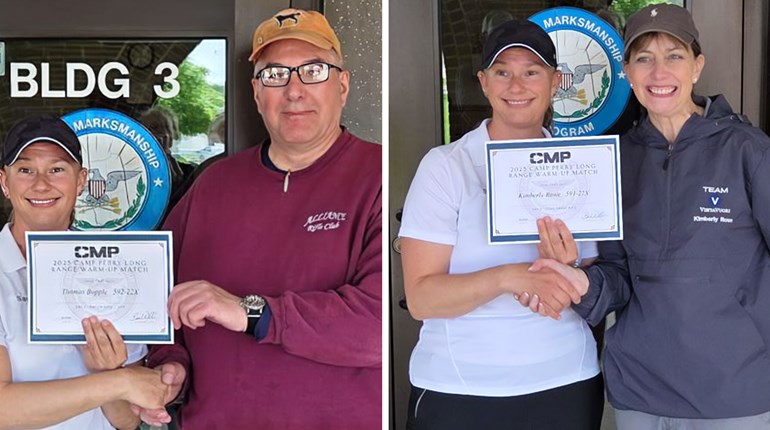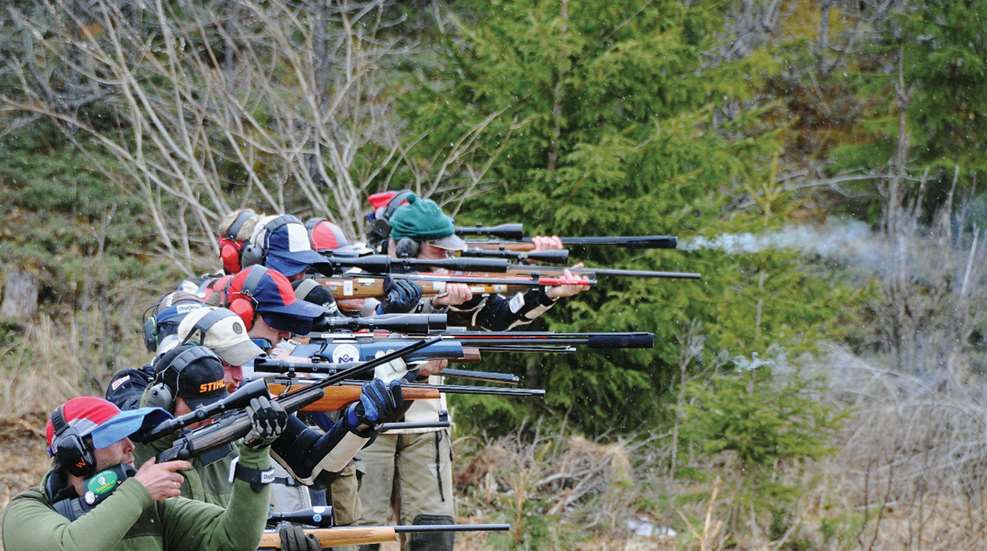
From the November 2012 issue of Shooting Sports USA.
Both misinformation and mystique surround the use of suppressors in the United States. The Gun Control Act of 1968 (GCA) is the federal law that regulates the interstate commerce of firearms by limiting transfer authority to licensed manufacturers, dealers and importers. Within the GCA, suppressors are defined as:
… any device for silencing, muffling, or diminishing the report of a portable firearm, including any combination of parts, designed or redesigned, and intended for use in assembling or fabricating a firearm silencer or firearm muffler, and any part intended only for use in such assembly or fabrication.
The GCA also includes language concerning criminal punishment regarding the unlawful use of suppressors. But it is the earlier National Firearms Act of 1934 (NFA) that regulates ownership of suppressors in the United States.
In general, a competitor who wants to “shoot quietly” at a local range will follow their state’s procedures to initiate the request to own a suppressor. Before you reach for the tape measure to see if your Palma rifle and suppressor will fit in a gun case, note that current NRA High Power rules ban the use of sound suppressors, given the general intent to ensure a level playing field among all contestants and in keeping with the “as issued” or “external modification” criteria. No such language is included in the CMP rules.
NRA 3.16.1 Compensators and Muzzle Brakes. The use of compensators or muzzle brakes is prohibited. An extension tube that has been installed on the muzzle of a rifle to extend the sight radius shall not be considered a “muzzle brake.” The extension tube must have an interior diameter of 0.5 inches or greater and may have 1/4” x 1” slots cut at 12 and 6 o’clock to remove cleaning patches. Threaded holes along the top of this tube for the installation of sight bases will be allowed.
(a) Sound suppressors are not authorized for use in high power competition.
In the same vein as U.S. municipalities who enforce automobile muffler laws, several European countries encourage the use of suppressors in their hunting and competitive shooting programs. From Kenneth Skoglund of Norway:
“Here in Scandinavia we frequently shoot our version of your high power which is a 6.5x55 rifle and a target at 200m in Norway, and 300m in Sweden and Denmark. We also shoot field targets from 150m to 650m. All this with iron sights (diopter). Then we have competition for hunters. There we shoot at animal targets from 40m to 250m, using different calibres and rifle scopes. Suppressors are an individual choice but widely accepted as a way to reduce interfering noise for the neighbourhood. Look at www.standplass.no.”
In their simplest form, a suppressor is a muffler—the same as that found on your automobile. In fact, both car mufflers and firearm suppressors followed a parallel development path at the turn of the century. The first prototype suppressors appeared in the early 1900s in various countries, following the evolution of the automobile. American inventor Hiram Percy Maxim (son of the Maxim Machine Gun inventor), received a patent for his suppressor in 1909, trademarked as the Maxim Silencer.
Some important distinctions for a suppressor used in target shooting are the need to periodically clean the device, and a design that relieves blow back pressure. Consider what an overly restrictive muffler would do to your car’s performance. The same holds true for a match gun, particularly with a gas-operated action.
The Test
SSUSA collaborated with industry experts to study whether suppressors were a viable alternative for competition. The following team was assembled for an initial test, conducted on a warm but perfectly still day in August, 2012.
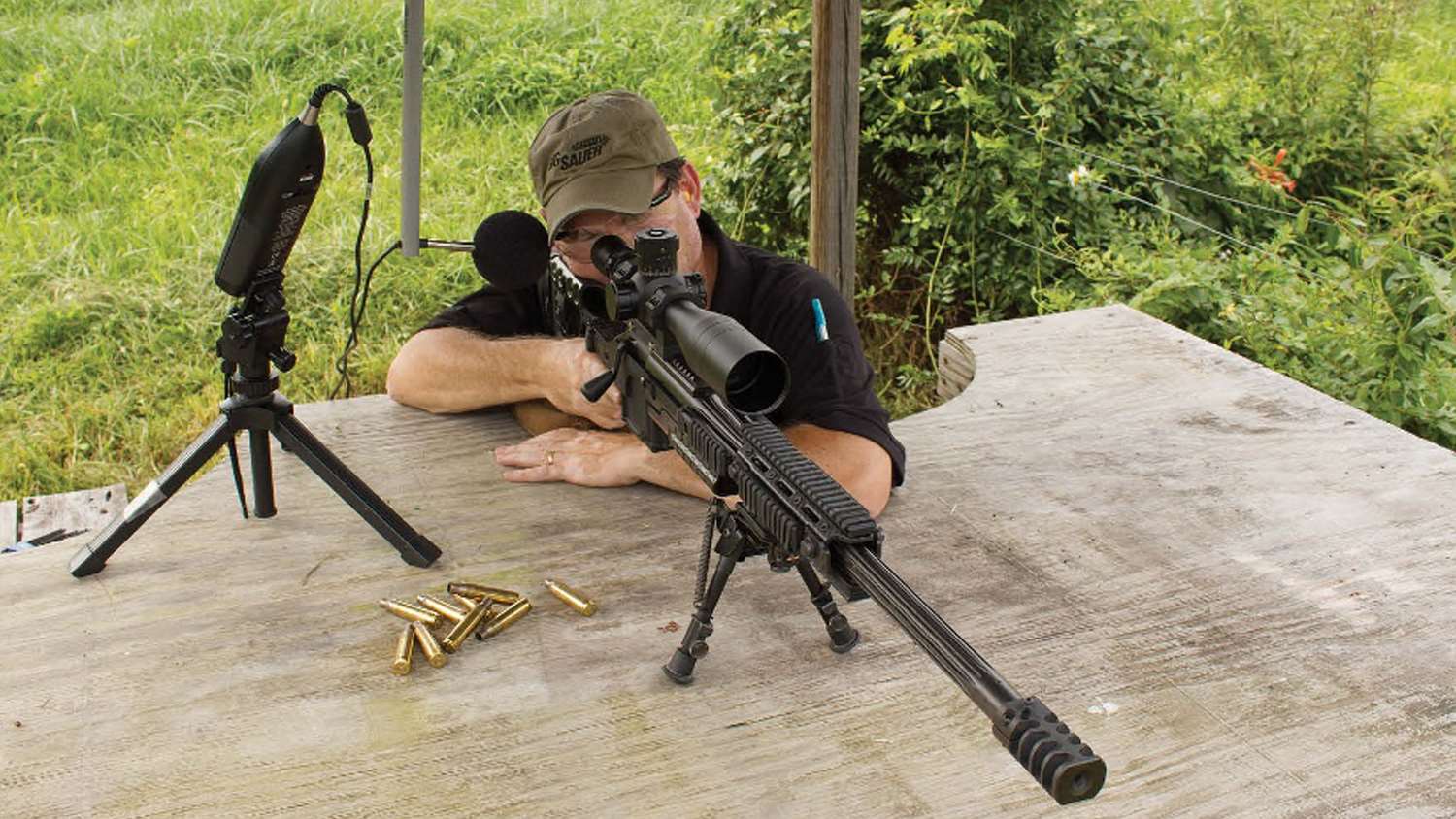
Our conclusion: That a suppressor can actually improve precision and performance, rather than restrict it, while proactively lowering the noise that accompanies sport shooting.
• David Grimshaw, SIG Sauer’s Product Manager for Special Weapons Development, helped orient the test based on work his company has already completed. This was helpful in preventing the team from simply “repeating history.” In addition to providing equipment and firearms, Grimshaw served as the “test pilot,” firing all three guns.
• Jim Keeney contributed as subject matter expert and recorded all sound data using the SIG provided Larson-Davis Sound Track LXt1 equipment.
• David Sams, licensed firearms manufacturer and master gunsmith, helped develop the test parameters, providing his unique “sub MOA” perspective on the proper manufacture and mounting of a match-grade suppressor.
• The author recorded chronograph data using an Alpha Model, Master Chrony, placed 15 feet from the muzzle, and served as an objective “juror” to collect target data.
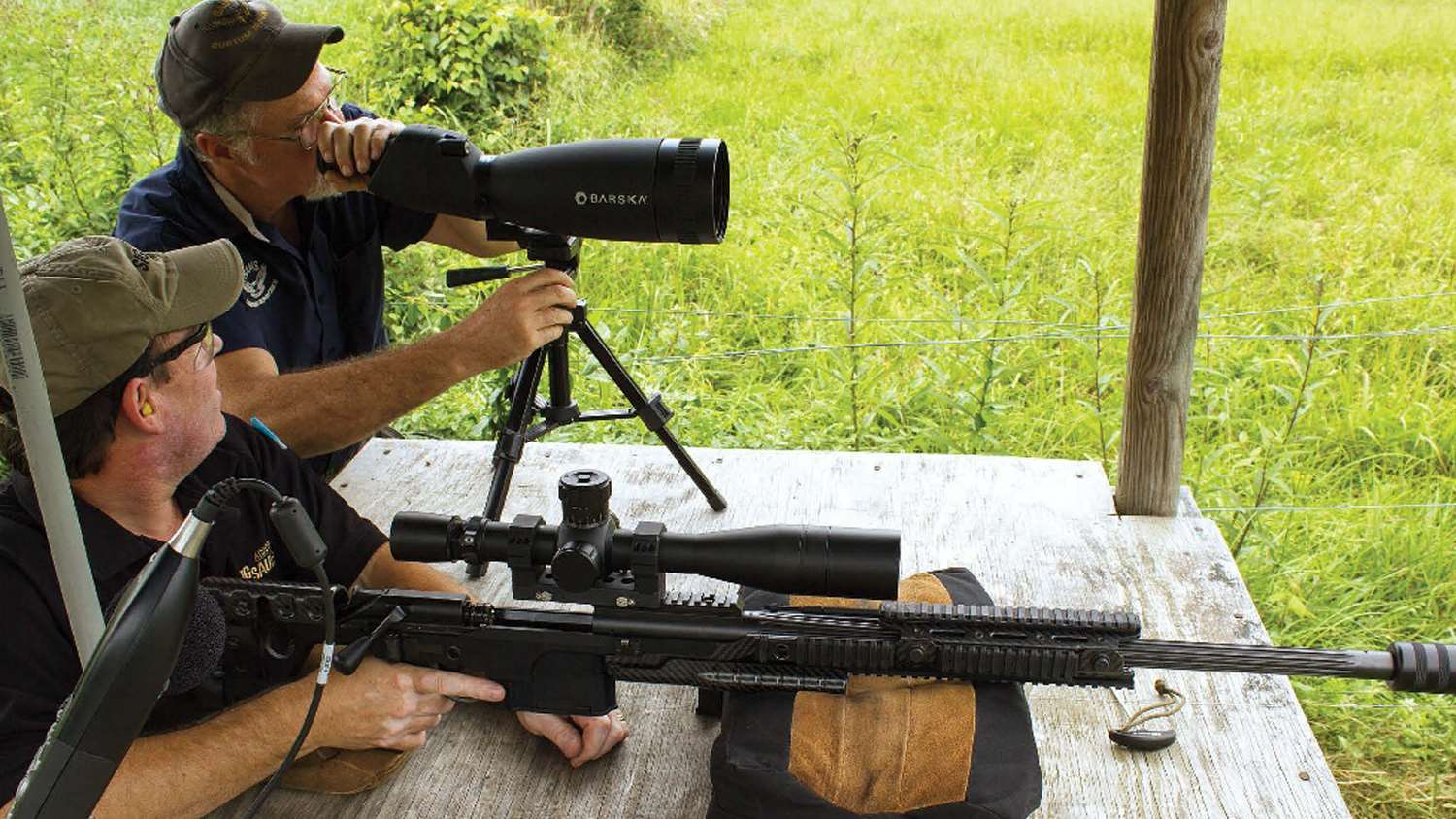
The two Davids (Grimshaw and Sams) first met in 1989 at the 18th Airborne Corps Pistol Competition at Fort Bragg. Grimshaw was the Operations NCO with B Company, 3/504 Parachute Infantry Regiment, as well as the battalion pistol team coach. Sams was the NCO in charge of the USAMU-MTU#1 Pistol Section at Fort Bragg. Not long after returning from Operation Just Cause, Grimshaw was “mysteriously” reassigned to the USAMU-MTU#1 as a Pistol Instructor. They have been friends ever since.
Our Conclusion: That a suppressor can actually improve precision and performance, rather than restrict it, while proactively lowering the noise that accompanies sport shooting.
Testing was conducted from 200 yards, in two hours, during which the temperature varied by only eight degrees Fahrenheit. There was no measurable wind throughout the test. High power scopes were used to both zero the guns and shoot test groups. Gun barrels were cleaned between each string of fire.
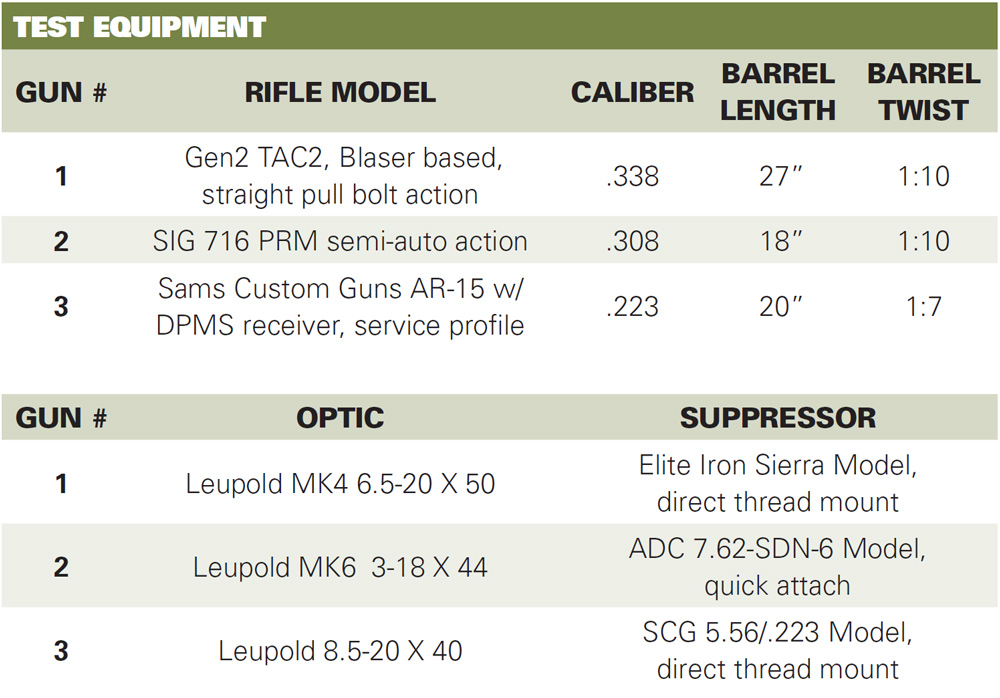
During the test, we observed that the suppressors produce enough heat to create a distracting mirage. As a remedy, experienced competitors have learned to cover suppressors with fire proof insulation, made for this purpose, similar to barrel mirage shades used in benchrest and F-Class competition.
The Results
Each gun’s precision was measured from 200 yards, using OnTarget Precision Software, Version 2.10:

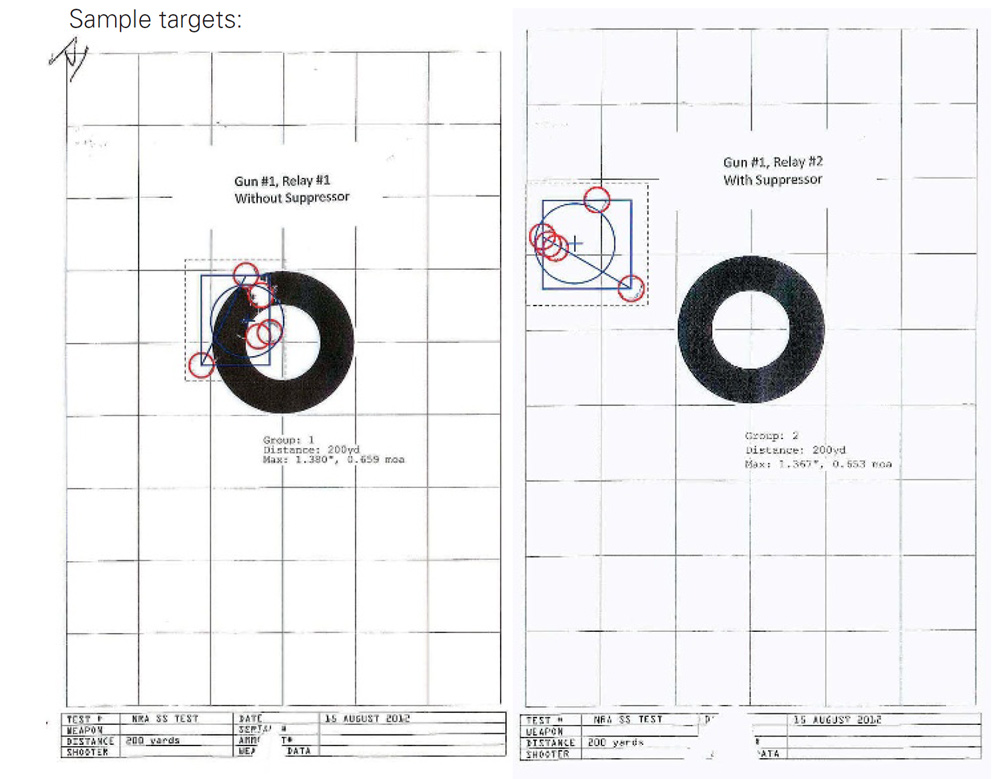
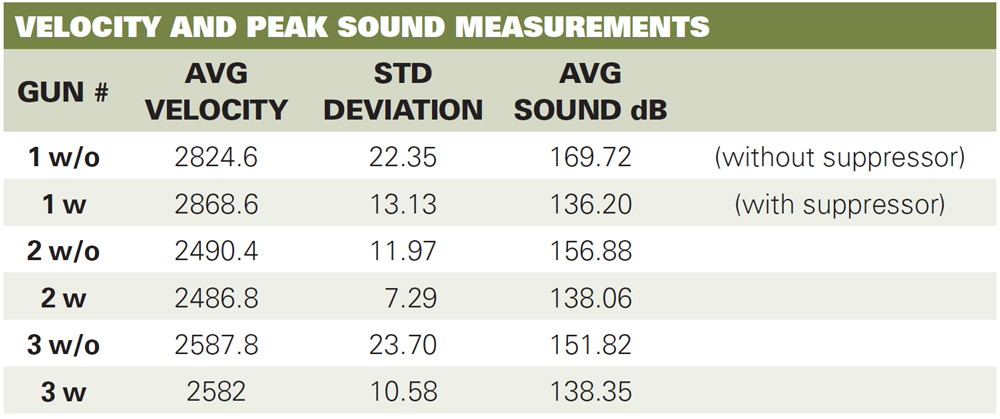
Hornady’s Chief Ballistician Dave Emary was surprised to see the degree of change in standard deviation, so we asked Ken Oehler (Oehler Chronographs) for his opinion. Says Oehler:
“Dave’s reading on the apparent decrease in velocity SD with the suppressor reflects my feelings. Yes, I can see that a suppressor might act like a barrel tuning device and change either point-of-impact or group size, but it’s hard to alibi that change in velocity SD. Statisticians have an old saying that, “You take a sample size of 10, just to make a guess of how large a sample you really should take.” SDs are fickle! My suggestion is that you report the observed SDs, but draw no conclusions and make no percentage comparisons until you can do more testing with larger sample sizes. I tell folks that I trust a 10-shot SD just about as much as I trust a single three-shot group. It’s a good indicator, but calling it a measurement may be stretching the point.”
Existing Competitions
In recent years, competitions that allow suppressors have been on the rise. Take, for example, the 2011 Steel Safari match, in which 38 shooters competed and nearly half of the top ten used suppressors. NRA’s Whittington Center hosts a monthly, non NRA-sanctioned Sporting Rifle league during February–September in Raton, NM, in which suppressors are well-represented.
Other than internal manufacturer tests, little has been published on the effect of sound suppressors on precision and performance. We did locate several articles on the general topic of sound suppressors, including these examples:
December, 2011, American Rifleman: “While American gun owners don’t often point to Europeans as providing an example that should be followed, the use of suppressors in Europe is an exception. In many of the countries “across the pond,” the use of these noise attenuating devices is actively encouraged. Buying “moderators” (their term for suppressors) from a hardware store is often no different than buying a hammer or a screwdriver. They are often not subject to the same draconian regulation as consumers here in the United States.”
February, 2009, Shooting Illustrated, Steve Adelmann writes: “Sound suppressors aren’t what most people think. But, with a little practice and know how, it’s surprising how effective they can be.”
The Next Step
According to one veteran ATF employee, any effort to modernize the National Firearms Act of 1934 would be burdensome, since legislative efforts must be coordinated at both state and federal levels. Until then, match rules for national-level competition will likely cater to the least common denominator—those states whose sport shooters aren’t allowed to practice locally with a sound suppressor. (Perhaps the neighbors of those sportsmen, a far larger number, would care to weigh-in on the benefits of noise reduction.)
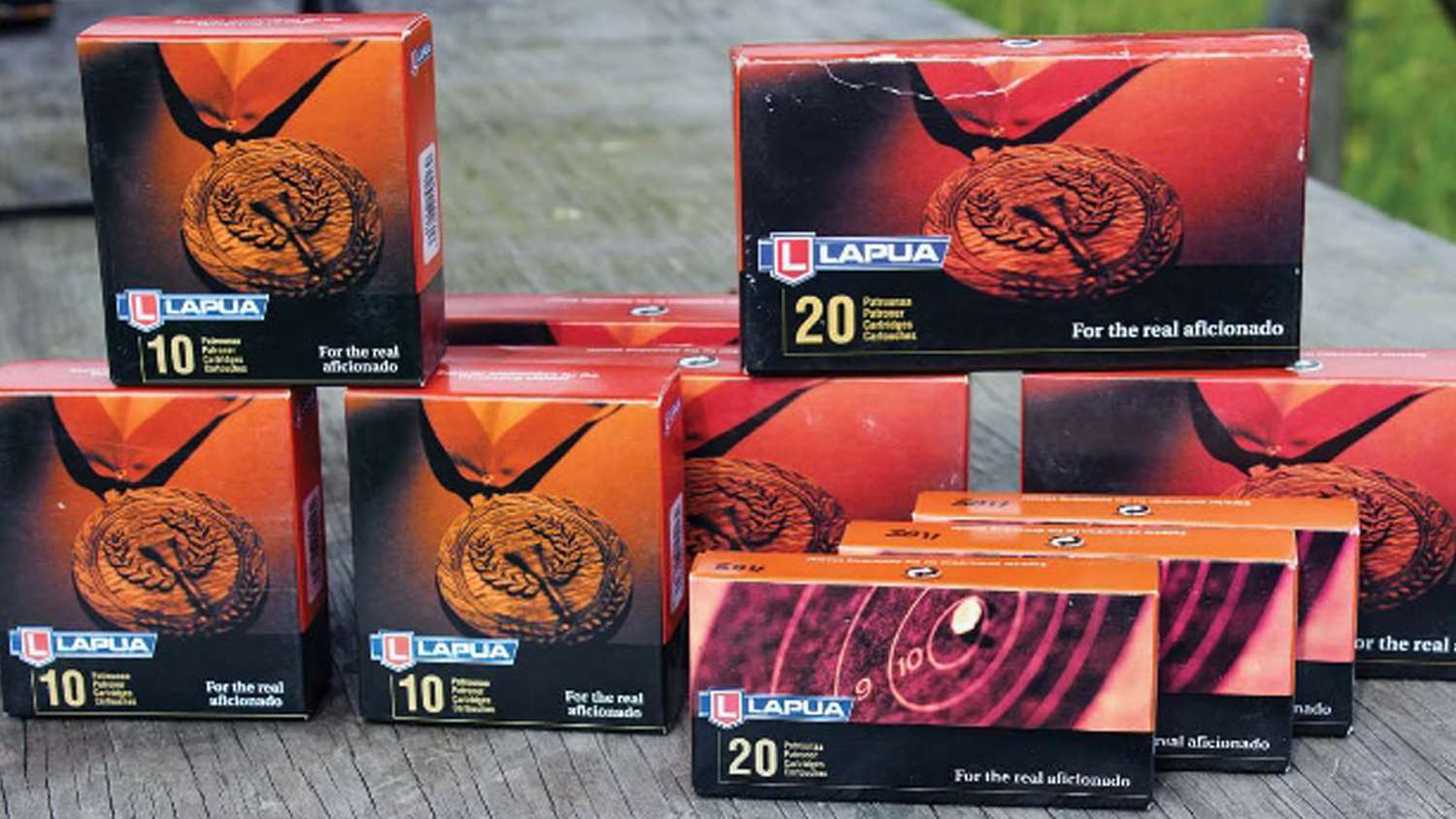
Future testing may analyze point-of-impact (POI) shift, the benefits of indexing the suppressor and method of attachment. Recognizing that a suppressor serves as an unintended tuning weight for the barrel, repeatable POI would be mandatory for any gun that is frequently disassembled for cleaning and maintenance. Another consideration is our relatively small sample size for this test—six five shot groups per rifle (three without and three with a suppressor). A more exhaustive test may include several 10-shot groups at various altitudes and temperatures to measure their effect on the pressurized gas behind the bullet and the column of air in front.
From David Sams: “Quick attach” suppressor exhibited excessive tolerance (“slop”) between the suppressor and the barrel. This results in misalignment of the barrel bore and suppressor through hole, which can lead to inconsistent and unequal distribution of gases as well as, worst case, a baffle strike from the bullet.
Back pressure’s effect on gun cycling (ejection) should not be a factor. The bullet has already passed the port hole in the barrel, thus releasing the metered gas to cycle the gun through the unlock-extract-eject sequence by the time the bullet and gas have entered the suppressor.
Cleaning is another concern with suppressors. I examined several test suppressors with a bore scope (since they could not be disassembled) and found them to be caked with carbon fouling, which explains the blowback we experienced during testing. Blowback pressure is caused by several factors including internal baffling design and a lack of sufficient expansion area Also noted during the test with two suppressors was fouling along the entire length of the spent cases. This accounted for some of the ejection and extraction problems experienced with two of the tested suppressors.
Normal cycling results when the bullet from a semi-auto rifle is several inches past the muzzle, before the bolt unlocks. With an M14 rifle, for example, the bullet is 9.2 inches beyond the muzzle when the op rod starts to move, and 123 inches from the muzzle when the bolt unlocks. A dirty suppressor results in more carbon fouling during the early part of this cycle, causing a potentially dangerous situation. For this reason, a suppressor that can be thoroughly cleaned is important for accuracy, reliability and safety.
I’ve only been manufacturing suppressors commercially for six months but have learned a lot about the principles of sound suppression and reliable functioning. For starters, if the suppressor’s sound signature is not at a level where hearing protection isn’t required, then the suppressor isn’t very effective. Secondly, the material used in suppressor construction must be very resistant to heat and corrosion. Normally this means stainless steel (SS). There are different types of SS and what I’ve selected for my suppressors is heat-treatable 17-4 PH for the baffles and 316L for the main tube and end caps. All the models/calibers I make can be disassembled per the above discussion on cleaning. I do not make a quick-attach model, preferring direct thread instead. As is my practice with precision firearms, my suppressors exhibit close tolerances; the best materials; and can be cleaned down to the individual baffle.
In closing, baffle through holes are critical to the gas-distribution cycle. They should be minimum diameter for a given bullet caliber, yet provide proper clearance without the possibility of a bullet strike. Rate of barrel twist and bullet design are just as important with a suppressor as without. And finally: Barrel threading must be turned true to the center of the bore.















